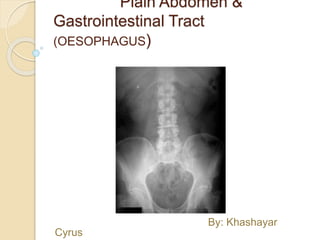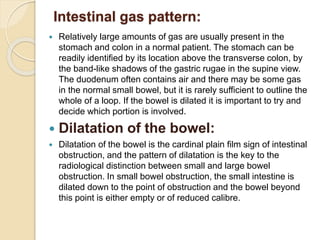This document provides an overview of plain abdominal x-rays and gastrointestinal imaging. It discusses how to analyze intestinal gas patterns, identify dilated bowel sections, and look for signs of pneumoperitoneum or ascites. It describes different types of bowel obstructions and how to distinguish small vs. large bowel obstruction based on dilation patterns. The document also discusses imaging of the esophagus, including how barium swallow exams are performed and what they can reveal about strictures, contractions, and dilation.




































